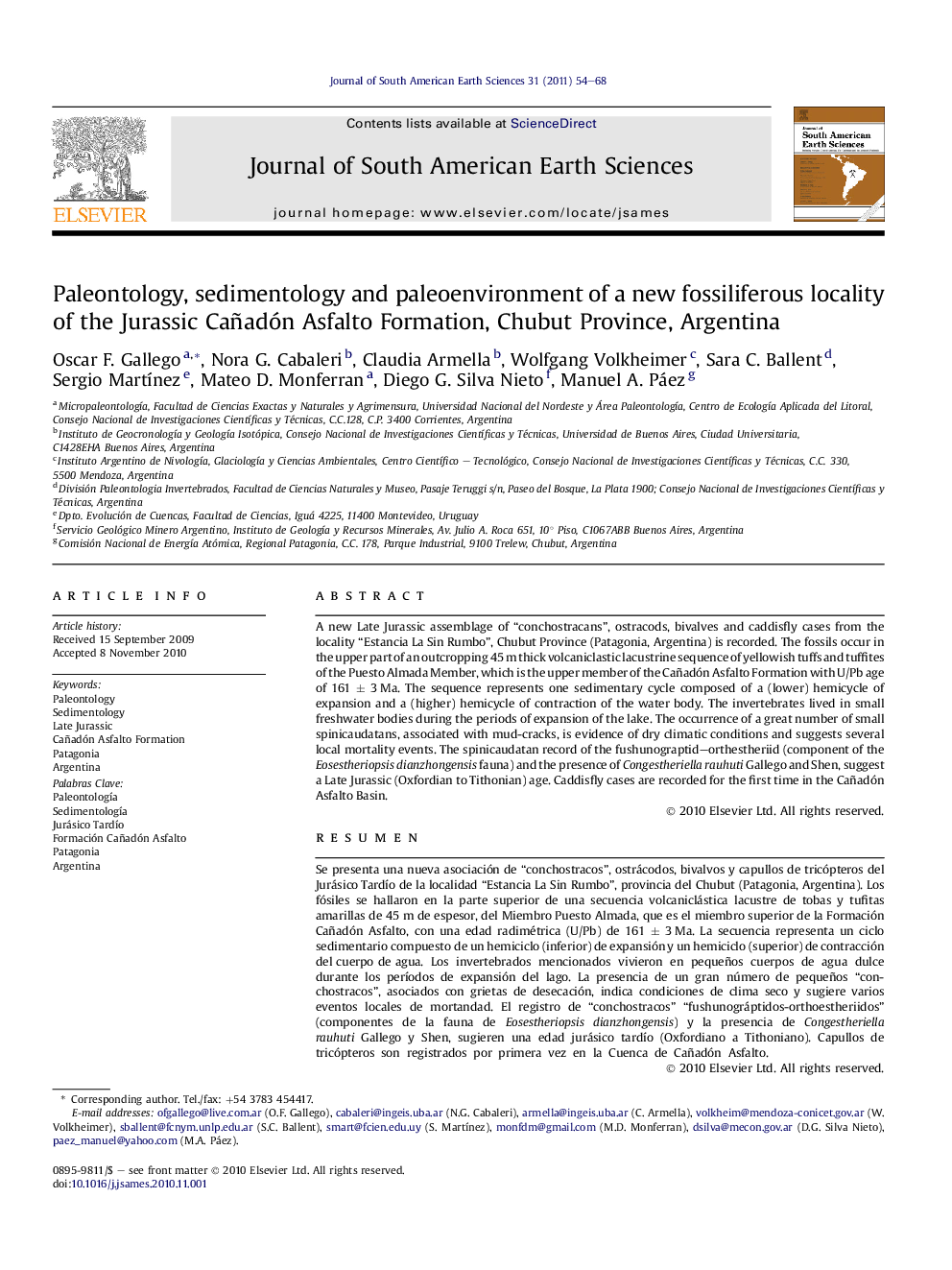| Article ID | Journal | Published Year | Pages | File Type |
|---|---|---|---|---|
| 6431495 | Journal of South American Earth Sciences | 2011 | 15 Pages |
A new Late Jurassic assemblage of “conchostracans”, ostracods, bivalves and caddisfly cases from the locality “Estancia La Sin Rumbo”, Chubut Province (Patagonia, Argentina) is recorded. The fossils occur in the upper part of an outcropping 45 m thick volcaniclastic lacustrine sequence of yellowish tuffs and tuffites of the Puesto Almada Member, which is the upper member of the Cañadón Asfalto Formation with U/Pb age of 161 ± 3 Ma. The sequence represents one sedimentary cycle composed of a (lower) hemicycle of expansion and a (higher) hemicycle of contraction of the water body. The invertebrates lived in small freshwater bodies during the periods of expansion of the lake. The occurrence of a great number of small spinicaudatans, associated with mud-cracks, is evidence of dry climatic conditions and suggests several local mortality events. The spinicaudatan record of the fushunograptid-orthestheriid (component of the Eosestheriopsis dianzhongensis fauna) and the presence of Congestheriella rauhuti Gallego and Shen, suggest a Late Jurassic (Oxfordian to Tithonian) age. Caddisfly cases are recorded for the first time in the Cañadón Asfalto Basin.
ResumenSe presenta una nueva asociación de “conchostracos”, ostrácodos, bivalvos y capullos de tricópteros del Jurásico TardÃo de la localidad “Estancia La Sin Rumbo”, provincia del Chubut (Patagonia, Argentina). Los fósiles se hallaron en la parte superior de una secuencia volcaniclástica lacustre de tobas y tufitas amarillas de 45 m de espesor, del Miembro Puesto Almada, que es el miembro superior de la Formación Cañadón Asfalto, con una edad radimétrica (U/Pb) de 161 ± 3 Ma. La secuencia representa un ciclo sedimentario compuesto de un hemiciclo (inferior) de expansión y un hemiciclo (superior) de contracción del cuerpo de agua. Los invertebrados mencionados vivieron en pequeños cuerpos de agua dulce durante los perÃodos de expansión del lago. La presencia de un gran número de pequeños “conchostracos”, asociados con grietas de desecación, indica condiciones de clima seco y sugiere varios eventos locales de mortandad. El registro de “conchostracos” “fushunográptidos-orthoestheriidos” (componentes de la fauna de Eosestheriopsis dianzhongensis) y la presencia de Congestheriella rauhuti Gallego y Shen, sugieren una edad jurásico tardÃo (Oxfordiano a Tithoniano). Capullos de tricópteros son registrados por primera vez en la Cuenca de Cañadón Asfalto.
Graphical abstractDownload full-size imageResearch highlights⺠La Sin Rumbo locality carries a freshwater assemblage of paleontological interest. ⺠Jurassic assemblage contains spinicaudatans, ostracods, bivalves and caddisfly cases. ⺠Inhabits in small ponds during the expansion periods. ⺠Sedimentary cycles shows the expansion-contraction of the lake basin. ⺠Puesto Almada Member facies represent the silting of the Cañadón Asfalto basin.
